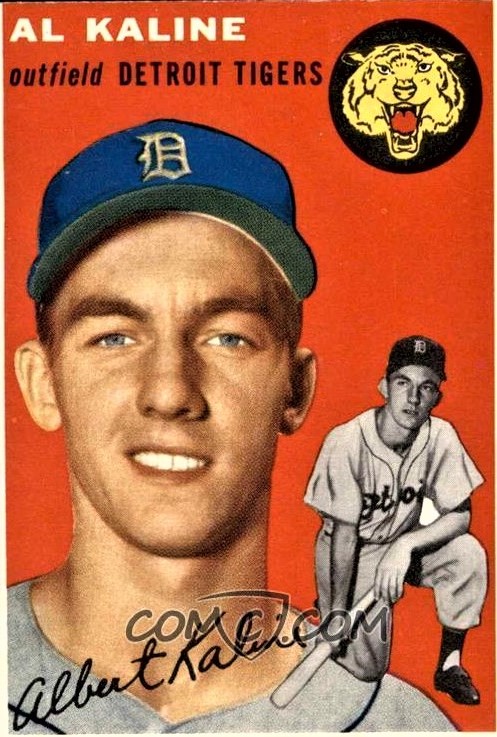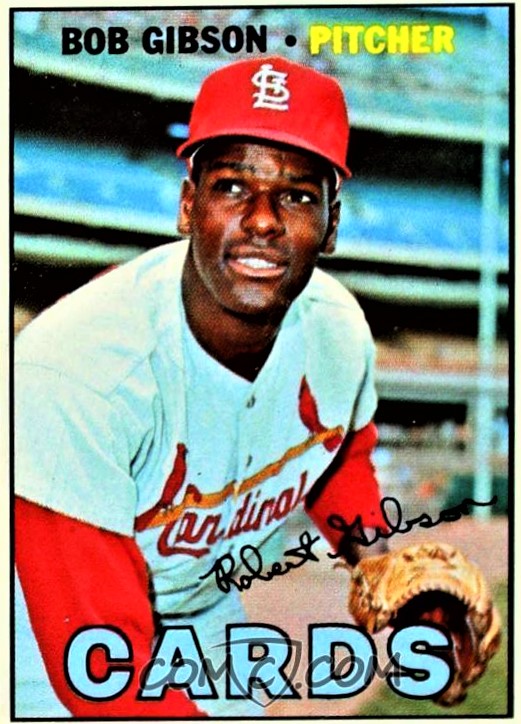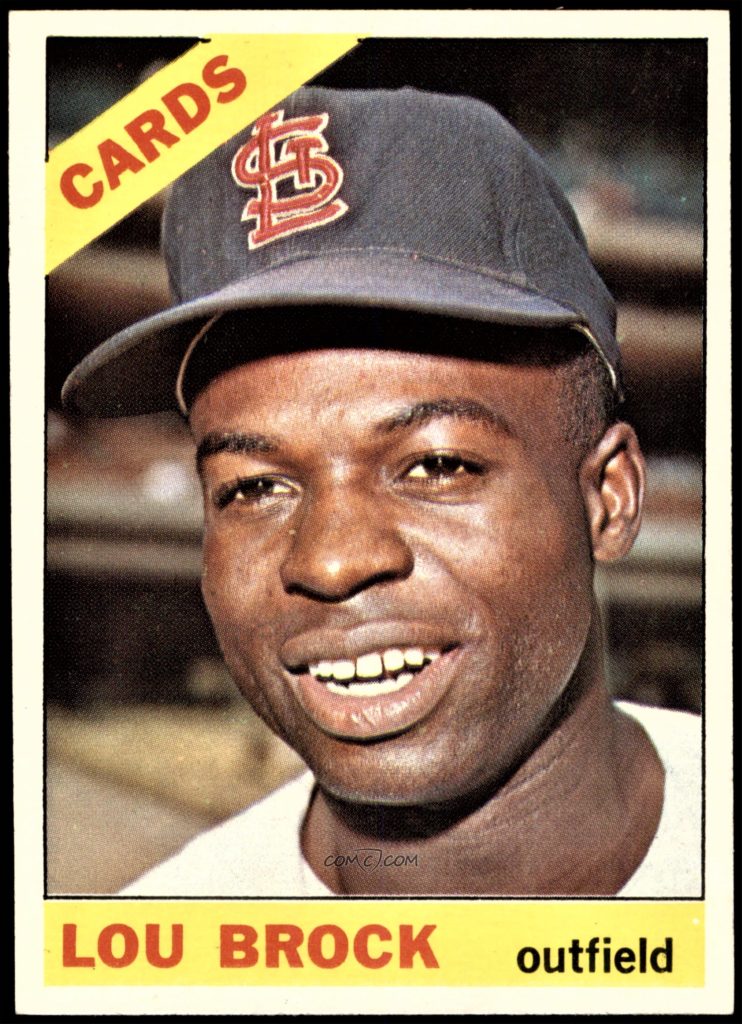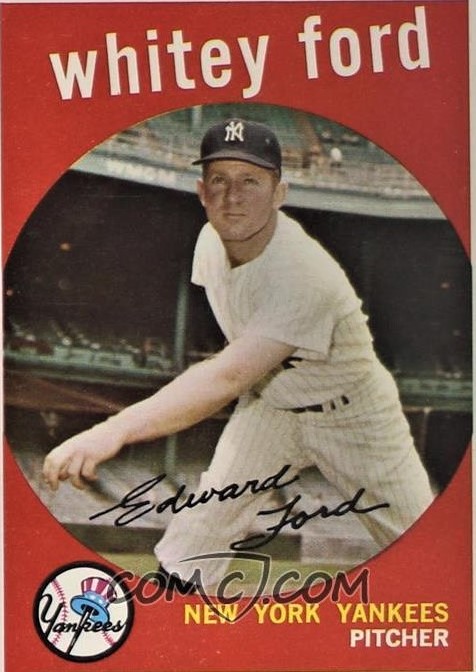The year just ended will long be remembered precisely because it was one we would like to forget. Baseball also took its lumps last year with a severely truncated season, experimental rules and a novel playoff format. The year 2020 was also a forgettable year for its toll on living Hall of Famers. No fewer than 7 Hall of Fame players passed away last year, several of them inner circle members of Cooperstown. After the jump, a tribute to those we lost last year.
Here is the honor roll of the 2020 departed.
Al Kaline (born 1934, died April 6th)
Tom Seaver (born 1944, died August 31st)
Lou Brock (born 1939, died September 6th)
Bob Gibson (born 1935, died October 2nd)
Whitey Ford (born 1927, died October 8th)
Joe Morgan (born 1943, died October 11th)
Phil Niekro (born 1939, died December 27th)
For the statistically minded about such things, seven Hall of Fame players dying within a single calendar year is a new record, surpassing the total of six who passed away during 1972 (the last being the tragic death of future HoFer and then active player Roberto Clemente, on the last day of that year). Though I haven’t checked this, I’m pretty confident that five HoFers passing within the space of six weeks (exactly 42 days) is also a record, and one not likely to be broken anytime soon.
I’ll briefly summarize the careers of these seven players and hopefully find some original statistical nugget to offer for each. I welcome your recollections about watching these great players or, for the younger set, any statistical insights you may have on their careers.
Al Kaline

Mr. Tiger played only in Detroit over his 22 major league seasons and never spent a day in the minors, arriving on the MLB scene as an 18 year-old in June 1953, directly out of high school. Kaline’s career was all about consistency, at bat and in the field. Kaline was durable, playing 90+ games in all but his first season, including ten seasons of 140+ games, and seven more with 125+ games. Kaline’s career slash of .297/.376/.480 was pretty close to what he produced just about every year, with 18 seasons with a .275 BA, 16 seasons with a .350 OBP, and 15 seasons with .450 slugging. Defensively, Kaline posted numerous seasons leading AL right-fielders in traditional metrics like putouts, assists, fielding percentage, range factor and total zone runs, totaling 26 first place finishes in those categories, plus 9 more first place marks among all outfielders, and 2 more among all players. Those results translated into consistent scores in value metrics, with ten seasons of 5 WAR, and eight more with at least 2.5 WAR. That WAR totaled to 92.8 for Kaline’s career, in the top 30 for all position players and 4th among right-fielders (5th if you count the Babe, who played in RF most often, but not quite in 50% of his games).
Kaline’s 399 career HR seems today like a relatively modest total for a 20+ season career, but ranked in the AL behind only celebrated sluggers Harmon Killebrew and Mickey Mantle for the seasons Kaline was active. Kaline never hit 30 HR in a season, but his 9 seasons with 20-29 HR was a record which stood until 1991, and his 16 seasons with 15-29 HR is still the most in a career. Kaline reached 1500 runs in his third-to-last season, 1500 RBI the next year, and 3000 hits and 1250 walks in his final campaign. He just missed two other significant milestones, the 399 home runs noted above and 498 doubles. If we give him credit for the last two, he would have been just the fourth player to reach all of those totals, after Stan Musial, Willie Mays and Hank Aaron. Another milestone Kaline reached in his next-to-last season was 2000 RF games, one of 11 players to do so. Quiz: who was the first AL right-fielder with this achievement?
What was the biggest hit in Kaline’s career? I’ll go with the 1968 World Series, Tigers down 3-1 in the series and trailing 3-2 in the 7th inning of game 5. Kaline’s single in that spot delivers the tying and go-ahead runs to keep Tiger hopes alive. Kaline followed that up with a 3 hit, 4 RBI performance in a game 6 laugher, with the Bengals completing the comeback on Mickey Lolich‘s 5 hit, 1 run performance on two days rest (it was one out away from a 4 hit shutout) to best Bob Gibson and the Cards.
Bob Gibson

Like Kaline, Gibson played his entire career for just one team. He reached the majors in 1959 after graduation from Creighton University, but his wildness in his first two seasons severely limited his playing time under manager Solly Hemus (another contributing factor was Hemus’s less than progressive views on race; he is is said to have generally avoided using black players in games, unless he felt he had no other options). Hemus was replaced mid-season in Gibson’s third year, and Gibson immediately flourished under new skipper Johnny Keane, lowering his walk rate from over 5 per 9 innings in 1961 to under 3 in the Cardinals’ world championship season in 1964.
Starting with Keane’s first full season in 1962, Gibson reached 230 IP, 15 wins and a 2.0 SO/BB ratio (the last used to be a highly coveted and respected achievement) in 10 of 11 seasons, missing only in 1967 when he lost time to injury (Gibson missed less than eight weeks with a broken leg suffered on a Roberto Clemente line drive; showing the toughness he would be famous for, Gibson pitched to three more batters on his fractured leg, retiring from the game only when the bone “snapped” above his ankle). Included in that eleven year span (1962-72) were eight seasons with 125 ERA+, seven seasons with 275 IP, seven seasons with 20 CG and five 20 win campaigns.
Gibson is perhaps most famous for his utterly dominant 1968 season, with a 1.12 ERA (lowest of the live ball era) and 13 shutouts (most in the live ball era). Included was a run of 19 CG in 20 starts to end the season, the only miss coming when he was removed after 11 innings in his Aug 4 start. That run featured five consecutive shutouts and eleven consecutive CG allowing one run or none. Not coincidentally, MLB lowered the mound and shrank the strike zone the next season.
That 1968 season also marked Gibson’s third and last appearance in the post-season. Each of his World Series appearances (all three were 7 game series) included 3 starts and 27 IP. For those 9 games, Gibson posted a 1.89 ERA, 0.889 WHIP and SO/BB ratio over 5. Gibson is the only pitcher with 3 CGs and 2 CG wins in World Series game 7’s (nobody else has more than one of either). His eight consecutive post-season CGs are twice as many as any other live ball era pitcher, and second only to Chief Bender‘s run of nine straight. Gibson and Stephen Strasburg (so far) are the only pitchers with SO/9 over 10 and BB/9 under 2 in 50+ post-season IP as starters.
With the relatively late start to his career (first qualified season at age 25), Gibson’s ceiling for career milestones was somewhat limited. Nonetheless, he still reached 250 wins and 3000 strikeouts, and came within a half-season’s work of 4000 IP. For the fourteen seasons aged 25-38, Gibson’s ranks in in the integration era include 6th in ERA and FIP, 5th in IP and Wins, 3rd in CG and 1st in SHO. For his peak years aged 29-34, those ranks are 1st in ERA, FIP and SHO, 2nd in Wins, 3rd in CG and 5th in IP. Gibson once said he felt most proud of recording more CG than Wins, in his mind the measure of a truly consistent and reliable pitcher; he and his almost exact contemporary Juan Marichal share the distinction of being the last pitchers to do so in a 1500+ IP career (Quiz: who was the last pitcher with this accomplishment in a 1000+ IP career?).
Lou Brock

Brock was Gibson’s teammate on those three Cardinal pennant winners of the 1960s, the first, in 1964, coming after a now famous trade earlier in the season from the Cubs. While he had shown some facility for stealing bases in Chicago, Brock ratcheted up his assault on the record book in his first full season as a Cardinal and the first of twelve straight campaigns with 50 steals that included 8 times leading the NL and 6 times leading both leagues. In the first ten of those seasons (1965-74), Brock added 180 hits and 80 runs; the next longest run of 50 SB/180 H/80 R seasons is only four years, by Ty Cobb (1909-12) and Tim Raines (1983-86).
Brock posted his career best SB total at age 35 in 1974 with 118 thefts, breaking Mary Wills‘s single season record of 104 (the next highest SB total for the age 35+ crowd is only 66, by Rickey Henderson at age 39 in 1998). The other stolen base record that Brock ran down was Ty Cobb‘s career mark, moving past the Georgia Peach with two steals against the Padres on Aug 29, 1977 (I attended that game, where the record-breaking achievement was marked by the customary ceremony etc. but, when Brock jogged out to left field for the next half-inning, prompting another standing ovation, he found he was the only player on the field, until his teammates, including Brock’s replacement, arrived after a couple of minutes; so, was this the first “curtain call” of this type in baseball?). In the interests of full disclosure, Brock didn’t actually break Cobb’s record that night; some years later box score sleuths “discovered” a handful more stolen bases for Cobb, so Brock really broke Cobb’s record a few weeks later in Montreal.
Brock is something of a unique talent, combining exceptional speed with high batting average and high strikeouts (you can probably think of other players with two of those traits, but hard to find another with all three). Brock was the first player of the modern era to post a season of 50 stolen bases, 90 strikeouts and a .290 BA. He eventually logged six such sesaons, twice as many as any other player, and more than 20% of all such seasons to date. To combine high strikeouts with high average, Brock needed to be efficient in producing hits when he did connect, and indeed he was, becoming the first player in the integration era to record nine qualified seasons with .340 BABip; only Rod Carew and Derek Jeter have recorded more such seasons since. Part of Brock’s success in this regard no doubt resulted from his speed producing infield hits, but another part was likely because he wasn’t shy about taking his cuts; like many of today’s players, when Brock made contact, he likely often made hard contact. Despite being a free swinger with limited home run power, Brock is one of just 20 players all-time (most are or will be HoFers) with 750 walks and more extra-base hits (Quiz: who is the only Brock teammate to also post such a career?). Brock finished his career as just the third player with 2000 games in LF and the first to also reach 3000 hits.
Like his teammate Gibson, Brock was a post-season dynamo, posting a career. 391 BA for the World Series, the highest ever in 60+ AB. He, Yogi Berra and Derek Jeter are the only players to bat .400 (min. 25 PA) in two World Series. Brock also holds the distinction of having the only WS game with a double, triple and home run, part of a WS record streak of three games with 3 or more hits (both are also post-season records, the first tied three times and the latter just once, by Tim Anderson in 2020).
Whitey Ford

Opposing Gibson, Brock and the Cardinals in the 1964 World Series were the perennial AL champion Yankees. The Yankee pitching staff in that series was led by rookie Mel Stottlemyre, but Whitey Ford was also there to open the series with his 22nd World Series start in his 10th Fall Classic, both records likely never to be approached. Some of Ford’s other World Series records include:
– 8 Game 1 starts
– 10 wins
– 3 consecutive shutouts (tied with Christy Mathewson)
– 4 consecutive scoreless starts
– 33 consecutive scoreless innings as starter
Ford began his career with a splash, posting a 9-1 record with a 2.81 ERA in 1950 in a half-season of work that included 7 complete games and 2 shutouts in only 12 starts. Ford also got the ball for the clinching game of the Yankee sweep of the Phillies in that season’s World Series (paradoxically, it would be Ford’s only win in a potential WS clinching game). Ford lost his next two seasons to military service, but picked up right where he left off in 1953 with the first of 13 straight seasons with double-digit wins and a winning record, 11 of them with single-digit losses. Including Ford’s first campaign, his .705 winning percentage for his first 14 seasons is the best of the modern era. Part of that success was playing for the Yankees, but mainly it was because Ford just didn’t give up many runs, posting a career 2.75 ERA that is the best of the live ball era among retired starting pitchers. Along the way, Ford led his league 3 times in wins and winning percentage and twice in IP, ERA and shutouts.
So, why was Ford so successful? For the seasons he was active, among pitchers with 1500+ IP, Ford ranked only 23rd in SO/9, 49th in BB/9 and 34th in SO/BB. But, he ranked 10th in H/9 and 12th in BABip, so he evidently knew how to induce weak contact. Still, those rankings don’t exactly scream “best ever ERA”. Part of the explanation lies in Ford’s clutch stats. While Ford’s overall ERA was 2.75, he was even better with men on base, and by a considerable margin, with a 2.40 ERA, best among 75 starters with 1500+ IP during the years Ford was active. With RISP, he was even better at 2.30, second in that group, behind only Dean Chance‘s 2.17. And, when pitching to the middle of the order (3 thru 6 hitters), Ford was best again with 2.92 ERA, only slightly higher than his overall ERA. In contrast to today’s max effort pitchers, a picture of Ford emerges as a pitcher who knew how to pace himself, easing up with the bases empty and bearing down when they weren’t. One more superlative for Ford was his adeptness at keeping runners from stealing bases. In his career of more than 3000 IP, Ford allowed exactly 30 stolen bases, a rate of 0.085 per 9 IP. Among 137 integration era left-handers (for which data are very nearly complete) with 1500+ IP careers, that is easily the lowest rate, with Terry Mulholland a distant second at 0.122, 43.6% worse than Ford’s mark. Ford retired in 1967 with 130 more wins than losses. (Quiz: since 1901, which pitcher has the largest such margin in a career of 300+ decisions?)
Watch for the second installment in this series, for the profiles of the remaining players.
